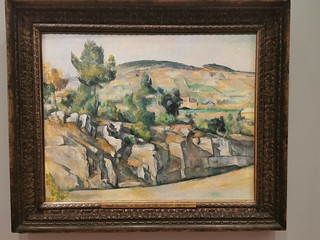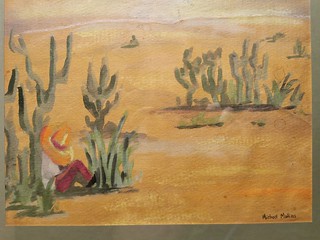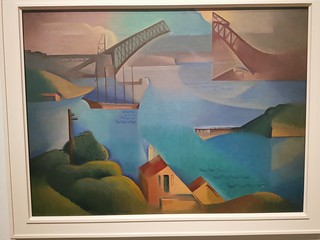Yesterday I took another trip to Canberra and found myself in the National Gallery of Australia (NGA).
For a third time I visited 'Know My Name: Australian Women Artists 1900 to Now', one of my favourite exhibitions for some time. But I gave most of my attention to the NGA's current blockbuster 'Botticelli to Van Gogh: Masterpieces from the National Gallery, London'.

I don't enjoy the crowds - and often predictability - of blockbusters. But I saw it yesterday because I was there, and nobody passes up an easy opportunity to witness such a big event.
The Italian Renaissance painting was beautiful but didn't speak to me. The Grand Tour - the right of passage where wealthy young Englishmen would tour Continental Europe - seemed grotesque. But I very much liked some of the other parts of the exhibition including 'France and the rise of modern art'.
This section took me back to the Saturday morning art classes I did as a child at what is now the Albury TAFE. I have retained much of what I learned about this period from the teacher Mrs Smith, including the characteristics of the works of painters featured here, such as Monet, Gauguin and Cézanne (above).

These painters departed from realistic depiction of landscapes and other objects in favour of more abstract forms, including broad brushstrokes and geometric shapes. I was fascinated by cacti as a child and Mrs Smith guided me to use broad brushstrokes to paint a Mexican desert landscape that currently hangs behind my bed (pictured).
The progression from realism to abstract in that show provided a good background for the Australian Women Artists' work in the next room (including Dorrit Black's cubist painting The Bridge from 1930, below).

The works here held particular meaning for me, articulated here in a section of the exhibition notes:
'Abstract work is a great joy... If you can empty your mind of chatter, and just live with the work for a few minutes, you find this enormous release into a mode of thought that is beyond speech.'